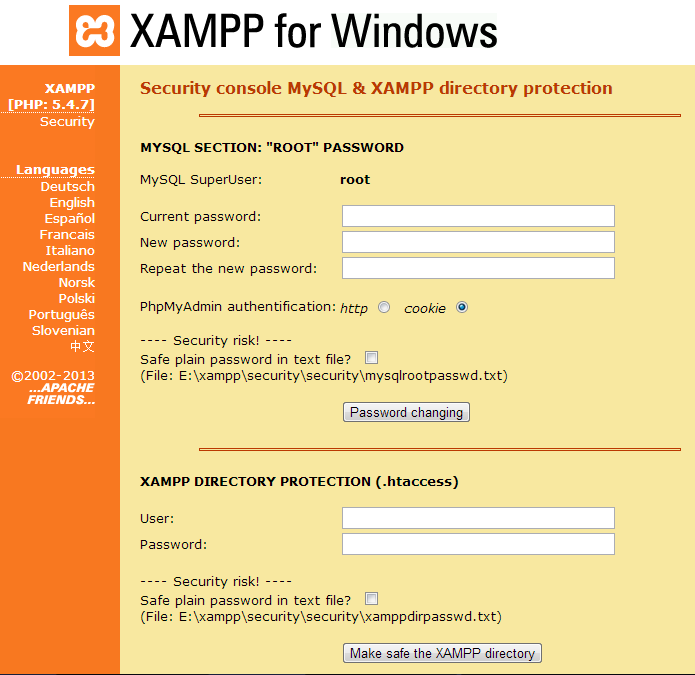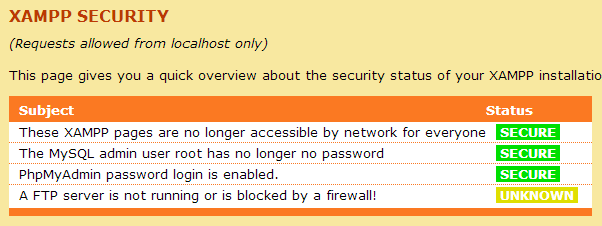Difference between revisions of "Securing OpenEMR"
From OpenEMR Project Wiki
Bradymiller (talk | contribs) (→PHP) |
Bradymiller (talk | contribs) |
||
| Line 5: | Line 5: | ||
:There is also a very nice write up on [http://www.oemr.org/wiki/Security_Assessment Security Assessment] for EMRs (especially regarding HIPAA compliance) on the OEMR Organization wiki. | :There is also a very nice write up on [http://www.oemr.org/wiki/Security_Assessment Security Assessment] for EMRs (especially regarding HIPAA compliance) on the OEMR Organization wiki. | ||
:<span style="color:red;">'''This document is still | :<span style="color:red;">'''This document is still a work in progress; hopefully as members of the community begin securing their OpenEMR instances for the web, they will place things they learned here in order to help others.'''</span> | ||
==OpenEMR== | ==OpenEMR== | ||
Revision as of 22:20, 17 November 2015
Securing OpenEMR
Overview
- With the advent of the Patient Portals, the community is now addressing the issues of how to best secure OpenEMR instances that are open to the web. Doing this requires a firm understanding of securing several parts, which at least include OpenEMR itself, Apache, MySQL, PHP, firewall, router, https, certficates, etc. A forum that began to discuss this issue can be found here.
- There is also a very nice write up on Security Assessment for EMRs (especially regarding HIPAA compliance) on the OEMR Organization wiki.
- This document is still a work in progress; hopefully as members of the community begin securing their OpenEMR instances for the web, they will place things they learned here in order to help others.
OpenEMR
- For OpenEMR versions 4.1.1 or less, remove the following file and directory, if they exist:
- FILE: library/openflashchart/php-ofc-library/ofc_upload_image.php
- DIRECTORY: library/openflashchart/tmp-upload-images/
- After installation/upgrade consider removing(or ensuring no access to) to the following scripts, which are not needed for general OpenEMR use:
- acl_setup.php
- acl_upgrade.php
- admin.php
- sl_convert.php
- setup.php
- sql_upgrade.php
- gacl/setup.php
- ippf_upgrade.php
- entire contrib directory
- (except for the contrib/icd9, contrib/icd10, contrib/snomed and contrib/rxnorm directories)
- entire phpmyadmin directory
- This is a rather controversial recommendation(some users rely on this tool). If you need to maximize security, then should consider removing this.
- After installing a patch consider removing (or ensuring no access to) the following script, which is not needed for general OpenEMR use:
- sql_patch.php
- Passwords
- Enforce strong/unique passwords, which can be set in Administration->Globals->Security.
- Enforce password expiration, which can be set in Administration->Globals->Security.
Network
- On server, consider only opening port 443 (https).
- Consider a firewall that only allows port 443 (https) traffic to the server.
Apache
- General hardening of Apache, which is described here.
- Only allow https (ie. turn off http)
- Do not allow direct web access to the following directories
- sites/*/documents
- sites/*/era
- sites/*/edi
- Do not allow use of .htaccess files in Apache (ie. turn off the AllowOverride setting).
- If not using portal and want to allow users to access over the internet, then consider using client-sided certificates to only allow users access to site
- If using third party patient portal, then use the current method whereby your instance is not on the internet and connects to the third party patient portal via vpn.
- If want to give access to the onsite patient portal over the internet, then consider using a client-sided certificate to only allow users access to the main OpenEMR login page (this is not optimal, though).
MySQL
- Ensure the root password is set to something.
PHP
- Use a Supported Version of PHP.
- Follow the OpenEMR php settings recommendations
XAMPP
- If you are using XAMPP, note that this software is extremely unsecure after installation and you need to secure it by configuring the Security Console.
- Navigate to the Security Console via http://localhost/security/xamppsecurity.php in the URL address bar. If the Welcome page is in a foreign language, it can be changed in the left sidebar. Navigate to the Security section.
- The first task is to set the MySQL root password. The question under "Security Risk!" asks if you wish to store the password in plain text. The first word is a verb, not an adjective; "save" instead of "safe". Users who are apt to losing things may wish to choose this option despite an increased risk. Click "Password Changing" button to save.
- The second task is to set the password to the Security Console. Click "Make safe the XAMPP directory" button to save.
- If this password is lost and not saved in plain text, it would be very difficult to gain access to the Security Console to change the MySQL root password. Knowing the MySQL root password allows the user to import the database to a new device or installation of OpenEMR at some future time.
- If the user needs to gain access to phpMyAdmin externally (outside of OpenEMR), he must know the MySQL root password.
- If the user opts to save the passwords in plain text, the paths to the folders containing the passwords are given.
- Navigate to the Status section from the left sidebar. If there are 3 green "Secure" bars, this exercise has been successful.
Codebase
- Ongoing project to prevent sql-injection and cross-scripting attacks.
- Consider adding a specific sqlconf.php override settings when using the patient portal (especially the onsite portal), which can be used to use a separate mysql user (and possibly database).
Security Assessment
- A security risk assessment is a requirement in the US for compliance with HIPAA and Meaningful Use. There is a very nice write up on this topic on the Security Assessment wiki page.


